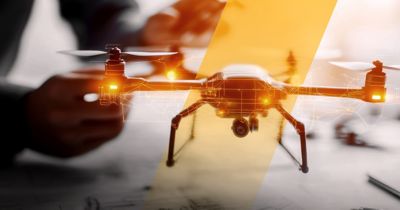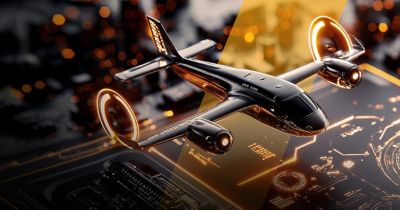
“It’s not rocket science.”
This lightly chiding expression has been used for years to indicate that a task isn’t too challenging. But what if it actually is rocket science?
The complicated world of rocket science includes everything from determining mission goals, analyzing the operational environment throughout the mission, and planning the rocket's orbital path to designing the rocket's structure, developing the propulsion method, and ensuring regulatory compliance throughout.

All these tasks are included in the mission engineering process, which is the stage of development in which engineers must determine if their designs are robust, compliant, and able to succeed in their mission.
Of course, rockets are only one example of the importance of mission engineering. Since the use of autonomous technology in the aerospace and defense (A&D) industry is increasing, the pressure to match this pace by accurately and rapidly analyzing functionality and compliance at the start of the design process — the mission engineering stage — is also rising. This is leading to a heightened need for effective and accurate mission engineering processes and tools for innovators across the A&D industry.
Essential Ingredients to Mission Success
To succeed in mission engineering, engineers and researchers must take a broad and comprehensive view of the entire mission, which includes thoroughly analyzing:
- Autonomous system architecture and design
- Mission environment(s)
- Operational scenarios
- Objectives
- The resulting challenges, opportunities, and gaps that affect mission success

To aid in gathering, organizing, and defining this information, engineers utilize:
- A design reference mission (DRM), which is a blueprint of the high-level mission scenario that a system or product needs to perform and covers the operational environment, mission objectives, and performance requirements
- A concept of operations (ConOps), which is a straightforward and brief verbal or visual statement describing how a product or system will be used to achieve the mission objectives defined by the DRM and can include workflows, systems interactions, and user roles
- An operational design domain (ODD), which involves capturing the range of operational contexts the autonomous systems will operate in
- A well-defined and detailed system design and architecture
The foundation provided by these elements provides a deep understanding of operational contexts, increased adaptability to varied and dynamic mission environments, and a comprehensive blueprint for the autonomous system’s development and integration. With these tools, engineers are better able to identify risks early in the design process to minimize costly and time-consuming late-stage changes, as well as build autonomous systems with enhanced reliability and performance by using a detailed definition.

However, these are not the only ingredients required for mission success. Ensuring compliance with system and safety requirements is another focus of the mission engineering stage.
Despite the importance of this goal, this is an incredibly difficult task for those working on autonomous systems in the A&D field. For starters, autonomous system safety regulations and compliance guidelines are often undefined.
Although engineers know they need to design and develop autonomous systems with safety and documentation in mind, how to achieve this goal is unclear due to a lack of official certifications and standards for autonomous technologies. And even when these standards and certifications are created, they will not be easy to achieve. For example, achieving compliance will involve proving that an autonomous design can handle all situations and the irregular and demanding environments common in A&D.
How Digital Mission Engineering Is Changing the Game
The need for dedicated mission engineering tools will only increase as autonomous technology develops and becomes more advanced and prevalent. That’s why engineers increasingly rely on digital mission engineering (DME) to create autonomous systems that will revolutionize the A&D industry. While DME began in the aerospace and defense industries, its popularity and use are expanding rapidly, with customers in industries such as automotive using it to design products like autonomous vehicles for use in urban environments.
DME is the use of digital modeling, simulation, and analysis to represent systems within a realistic operational environment and evaluate mission outcomes and effectiveness at every phase of the system engineering design life cycle. DME provides a foundation on which engineers and researchers can integrate digital mission and system models to develop a true engineering analysis environment that measures mission effectiveness and defines outcomes across all levels of fidelity.
Through the power of DME, engineers and researchers can better understand the performance and viability of autonomous systems before moving to real-world prototyping and testing, which saves costs and accelerates time to market.
Read this e-book to learn about the benefits of DME and the mission engineering challenges it helps address.
The Advantage Blog
The Ansys Advantage blog, featuring contributions from Ansys and other technology experts, keeps you updated on how Ansys simulation is powering innovation that drives human advancement.



